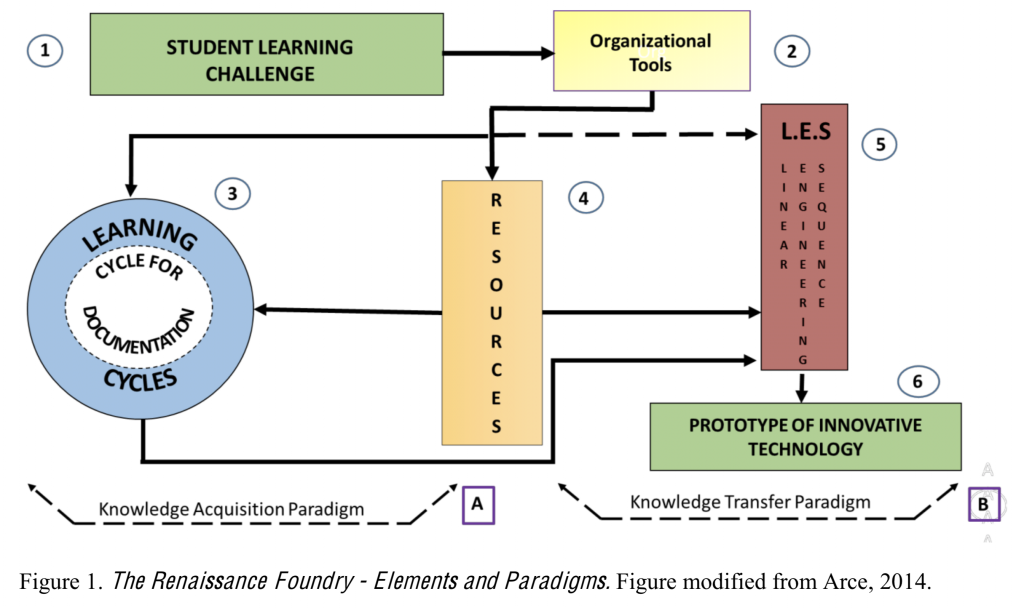THE FOUNDRY MODEL

The Pith
The Renaissance Foundry Model, a pedagogical framework or engine, is an innovation-driven learning platform that can transform traditional classrooms into creative environments for student learning. Based on innovation-driven approaches to learning, the Foundry leverages two paradigms, Knowledge Acquisition and Knowledge Transfer, to engage students in an iterative learning process comprised of six steps that begin with the identification of a challenge related to the course content and finalizes with the development of innovative solutions that address this challenge (i.e., prototypes of innovative technology). The platform is meant to be adaptive and has been implemented at course, program, and administrative levels.
The Inspiration
The Foundry Model is inspired by the view by Papert that “[knowledge is constructed] felicitously in a context where the learning is conscientiously engaged in constructing a public entity, whether it is a sandcastle on a beach or a theory of the universe.”
The Background
As the Cambridge dictionary indicates the Renaissance is a period when there was a new increase in interest and activity in “something” – for example, art, literature, and ideas in Europe during the 15th and 16th centuries. In addition, a “foundry” or factory is a place where hard materials (such as metals) are specially shaped to produce new machine parts. Therefore, we envision the role of the RFM as anchoring a new period in which elements or ideas from engineering, science, education, social theory, communications, business models and entrepreneurship, among others, are working interactively together to shape a new kind of engineer: A holistic-style professional.